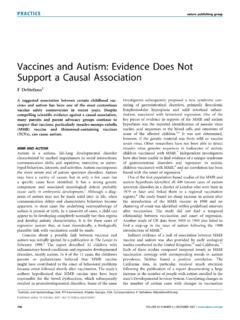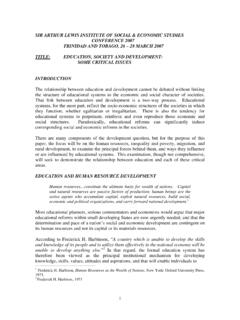Transcription of 101 WA YS TO TEACH CHILDRE N SOCIAL SKILL S
1 101 WAYSTO TEACHCHILDRENSOCIALSKILLSA READY-TO-USE,REPRODUCIBLEACTIVITYBOOKby LawrenceE. Shapiro, :1-56688-725-9 ISBN13: 978-1-56688-725-0 Allr UnitedStatesof America. 2004 LawrenceE. ShapiroTheBureauForAt-RiskYouthgrantslim itedpermissionfor thecopyingofthispublicationfor anyotheruse,nopartofthisbook maybe reproducedor transmittedinanyformorbyany means,electronicor mechanical,includingphotocopying,recordi ng,orbyany informationstorageandretrievalsystem,wit houtwrittenpermissionfromthe # 1/11/06 11:02 AM Page iiiiiTABLE OF CONTENTSNote: A reproducible worksheet follows each activity marked with ..VIIHOW TO USE THIS BOOK ..VIIICOMMUNICATINGI ntroduction ..11. Something Special About Me ..2 2. My Special Interests ..33. My Values* ..4 4. Introducing Yourself ..65. Remembering Names*.
2 76. Getting To Know Each Other ..97. Getting To Know One Person* ..108. We Have Something In Common* ..129. Giving A Compliment ..1410. Accepting A Compliment ..15 NONVERBAL COMMUNICATIONI ntroduction ..1711. Tone Of Voice ..1812. Voice Volume* ..1913. Making Eye Contact* ..2114. Facial Expressions* ..2315. Gestures* ..2516. Personal Space* ..2717. Use Of Touch* ..2918. Posture ..3119. Interpreting Body Language* ..3220. Identifying Emotions ..3421. How You Look ..3522061_Spreads 1/11/06 11:02 AM Page iii101 WAYS TO TEACH CHILDREN SOCIAL SKILLSivBEING PART OF A GROUPI ntroduction ..3722. Joining A Group* ..3823. Meeting New People ..4024. Asking Questions* ..4125. Sharing ..4326. Cooperating ..4427. Following Rules ..4528. Making Decisions Together.
3 4629. Being A Good Sport ..4730. Fostering Group Identity ..4831. Accepting Differences* ..4932. My Role Model ..5133. True Friends* ..5234. Understanding Cliques ..54 EXPRESSING YOUR FEELINGSI ntroduction ..5535. Identifying Feelings* ..5636. Talking About Your Feelings ..5837. I-Messages* ..5938. Empathy* ..6139. Mixed Emotions* ..6340. Self-Talk* ..6541. Self-Control ..6742. Dealing With Anger Toward Others* ..6843. Dealing With Another Person s Anger* ..7044. Handling Change* ..72 CARING ABOUT YOURSELF AND OTHERS Introduction ..7545. Seeking Help From Adults* ..7646. Understanding The Impact Of Your Behavior On Others* ..7847. Understanding The Behavior Of Others ..8022061_Spreads 1/11/06 11:02 AM Page ivA READY-TO-USE, REPRODUCIBLE ACTIVITY BOOKv48. Caring About Others*.
4 8149. Showing Interest In Others* ..8450. Prosocial Behavior ..8651. Kindness* ..8752. Kindness Cards ..8953. Giving Advice ..9054. Responding To Positive Advice* ..9155. Being A Friend* ..9356. Borrowing ..9557. Respecting Others ..9658. Offering Help To Others* ..9759. Depending On Others* ..99 PROBLEM SOLVINGI ntroduction ..10160. Identifying Problem-Causing Behaviors* ..10261. Refocusing Your Attitude ..10462. Brainstorming ..10563. Finding Alternative Solutions* ..10664. Deciding On The Best Solution ..10865. Learning From Mistakes ..10966. Thinking Before Acting* ..11067. Making Wise Choices* ..11268. Accepting Consequences ..11469. Group Problem Solving* ..115 LISTENING: A TWO-WAY STREETI ntroduction ..11770. Hearing Or Listening? ..11871. Listening During A Conversation*.
5 11972. Listening For Information ..12173. Following Instructions* ..12274. Reflective Listening ..12475. Active Listening* ..12576. Positive Feedback* ..12722061_Spreads 1/11/06 11:02 AM Page v101 WAYS TO TEACH CHILDREN SOCIAL SKILLSviSTANDING UP FOR YOURSELFI ntroduction ..12977. Feeling Good About Yourself ..13078. Creating A Positive Attitude* ..13179. Sticking Up For Yourself ..13380. Pat Yourself On The Back* ..13481. Avoiding Fights ..13682. Being Bullied ..13783. Dealing With Teasing* ..13884. Identifying Stress ..14085. Group Pressure* ..14186. Learning To Say No ..14387. Releasing Anger Safely* ..14488. Rights And Responsibilities ..14689. Being Assertive* ..147 MANAGING CONFLICT Introduction ..14990. What Is Conflict? ..15091. My Personal Conflicts.
6 15192. It Takes Two ..15293. Apologizing ..15394. Knowing When To Resolve Conflicts* ..15495. Resolving Conflicts Calmly ..15696. Compromising* ..15797. Win-Win Solutions* ..15998. Negotiating ..16199. Peer Mediation ..162100. Fair Fighting* ..163101. Positive And Negative Outcomes* ..165 SKILLS INDEX ..16722061_Spreads 1/11/06 11:02 AM Page viA READY-TO-USE, REPRODUCIBLE ACTIVITY BOOKviiIntroductionSome children seem to be socially adept from birth, while othersstruggle with various challenges of SOCIAL acceptance. Somechildren make friends easily; others are loners. Some children haveself-control, and others have quick tempers. Some are naturalleaders, while others are withdrawn. Many aspects of SOCIAL development seem to be an innate part ofa child s temperament, but we also know that the environment canplay an important part in shaping a child s SOCIAL development.
7 Inthe last ten years, psychologists have become increasingly awarethat SOCIAL skills can, and should, be taught. Many studies haveshown that shy children can become more outgoing, aggressivechildren can learn self-control, and children who tend to be socialisolates can be taught how to make is no question that children with better SOCIAL skills have asignificant advantage in life. They not only experience the rewardsof positive relationships, but they do better in school, have a betterself-image, and in general, are much more resilient as they facelife s inevitable book is designed to TEACH SOCIAL skills to many different typesof children, particularly those with SOCIAL problems. Often labeled ashaving a SOCIAL skills deficit, these children may be consideredaggressive, socially isolated, or shy.
8 The underlying concept is thatto proceed through the expected stages of their socialdevelopment, children should posses all the skills addressed by thisbook. Written for use by groups of children, such as a classroom ora counseling group, the activities are intended to help children inevery aspect of their SOCIAL development, as they relate their peers,their parents and their teachers. While many activities can be usedwith just one child, it is hard to argue with the concept that socialskills are best learned in a SOCIAL environment. 22061_Spreads 1/11/06 11:02 AM Page vii101 WAYS TO TEACH CHILDREN SOCIAL SKILLS viiiHow To Use This BookThis book is divided into nine sections that comprise the majorcategories of SOCIAL development. It can be used as the basis ofa SOCIAL skills curriculum , or as part of an educational ortreatment plan to address specific SOCIAL skills half of the activities, identified by an asterisk inthe Table of Contents, include reproducible worksheets.
9 Theseworksheets can be photocopied directly from the book, or theycan be printed from the accompanying CD. The worksheets onthe CD are in PDF format, and you will need Adobe AcrobatReader to view and print them. This program can bedownloaded without charge from 1/11/06 11:02 AM Page viiiCOMMUNICATING1 CommunicatingEffective communication, the foundation of SOCIAL success, consists ofmany distinct skills. The activities in this section will help childrencommunicate who they are to others and learn the skills that are soimportant in forming communication is a language and children are born withdifferences in their ability to learn this language, just as they have otherlearning differences. But there is no question that, with practice andencouragement, effective communication can be section begins by helping children understand and express whatmakes them unique.
10 As children learn to convey their interests, their values,and even their problems, they increase their self-acceptance and next step is to help children learn the skills involved in making an initialconnection with other children. Children need to know how to introducethemselves, how to develop a personal dialog with one child, and then howto maintain a conversation in a group. Many children who have problems insocial skills choose the wrong tactics for interacting with other may brag and try to get the attention of others, an approach that canoften lead to group rejection. Other children may hang back, just observingthe group, which may result in them being ignored. It is not helpful to criticize children for their inappropriate may lead to self-consciousness, and even resentment.











